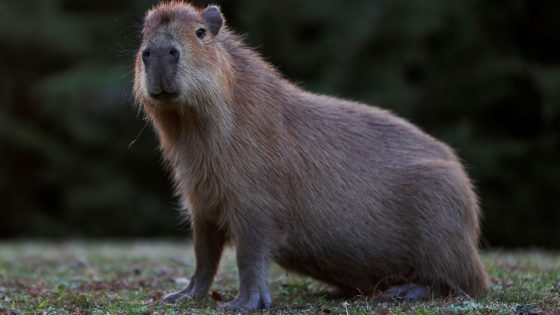A capybara is on the loose in Shropshire after absconding from its habitat.
Hoo Zoo and Dinosaur World posted on Facebook to announce its “beloved capybara” Cinnamon had gone missing on Friday.
The small, family-run zoo on the outskirts of Telford asked the public to report any sightings and added that the giant rodent should not be approached.
It said the animal had last been seen on a nearby road on Saturday evening.
“On Friday … our beloved capybara, Cinnamon, escaped from her habitat and entered the woodlands within the zoo grounds,” the zoo said.
“Unfortunately, we haven’t had any further sighting of Cinnamon since Saturday evening, despite having teams working around the clock to locate her.
“It is likely that Cinnamon is in the vicinity of the zoo, The Humbers and surrounding fields where there is ample food and plenty of ponds.”
The zoo said it had reported the escape to the council in line with the conditions of its zoo licence.
Read more from Sky News:
Trump targeted in apparent assassination attempt
One of final messages from Titan submersible revealed
More mpox jabs ordered as UK anticipates new strain of virus
Giant rodent ‘could become unpredictable if alarmed or cornered’
It added that “under no circumstances should a member of the public try to capture the animal by themselves”, explaining that although capybaras are “generally friendly and inquisitive animals”, Cinnamon “could become unpredictable if alarmed or cornered”.
“Cinnamon has a fantastic bond with her keepers and it is likely that she can be encouraged back to her habitat with no physical intervention,” the zoo added.
“Please wish us all the very best for the safe and swift return of Cinnamon. We appreciate all of your support in finding her.”
Capybaras are the largest rodents in the world and typically live near bodies of water in savannahs and dense forests.
They are highly social animals and typically live in groups of 10-20.
Source Agencies



